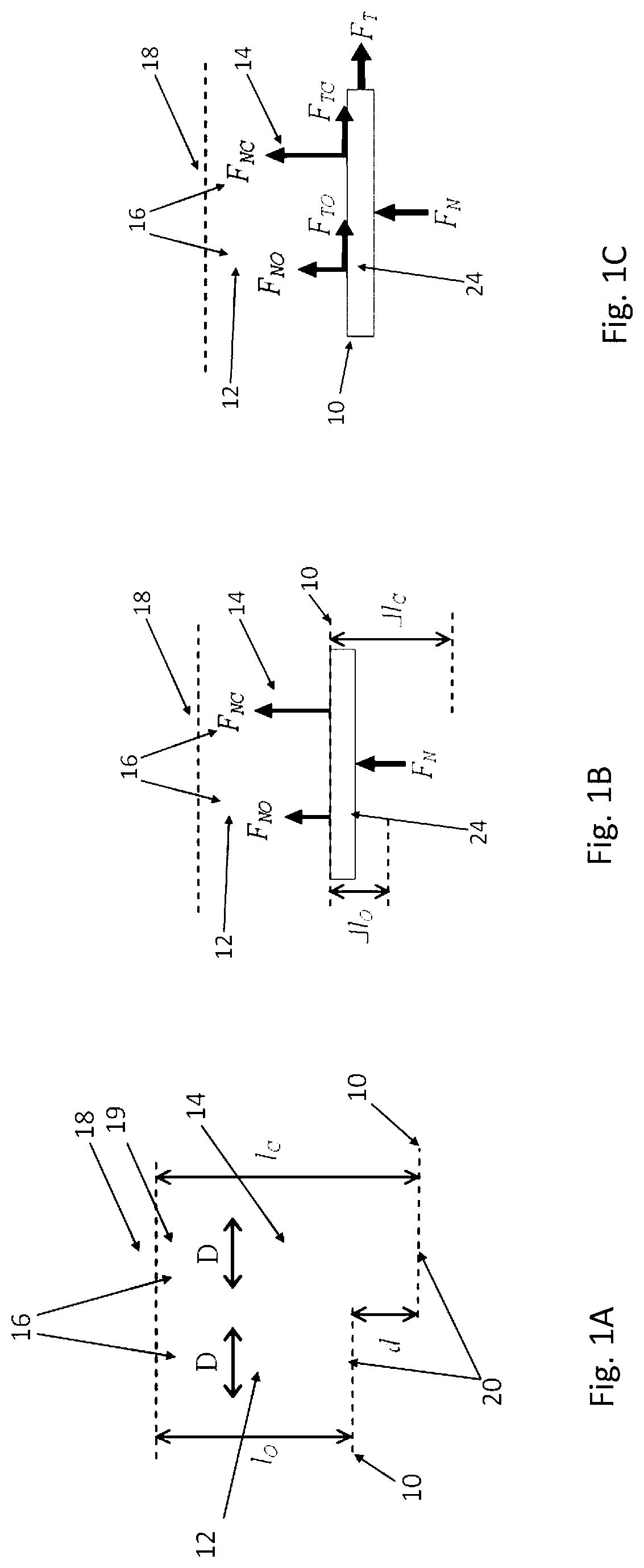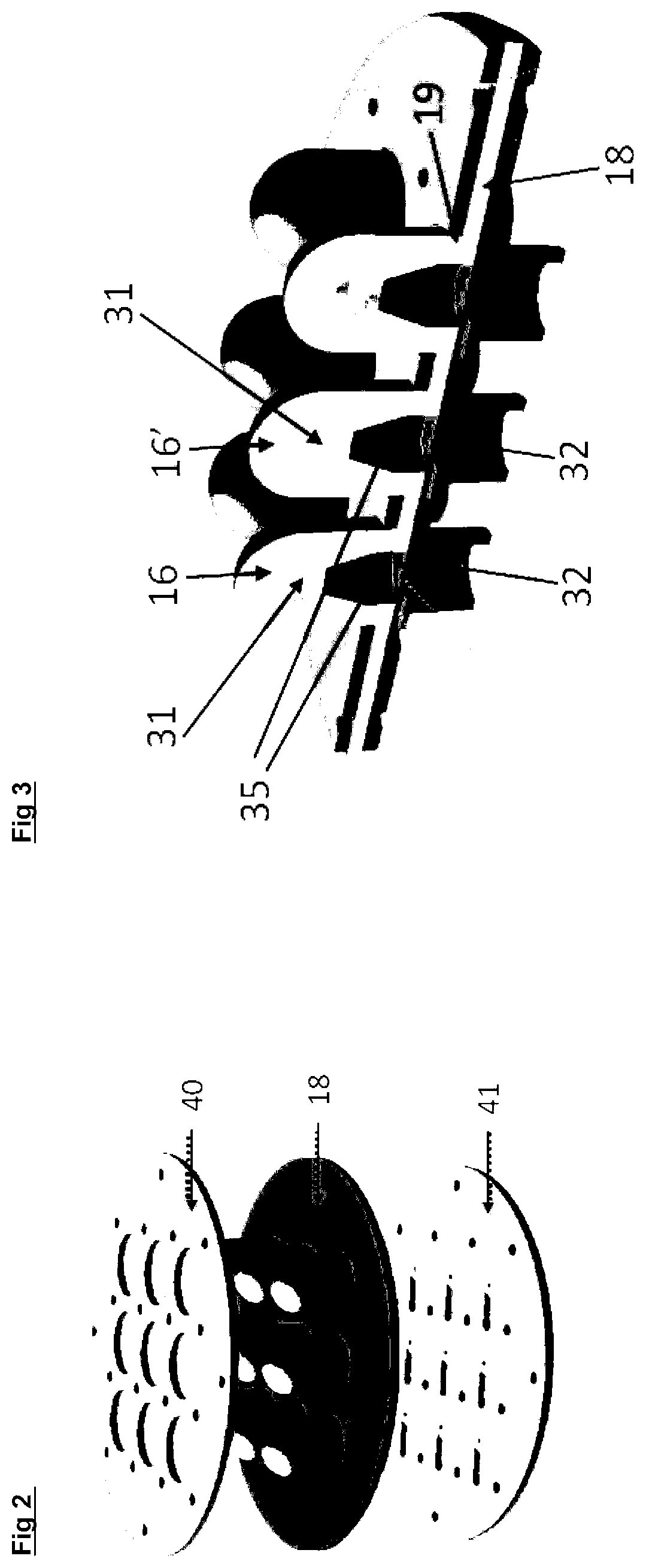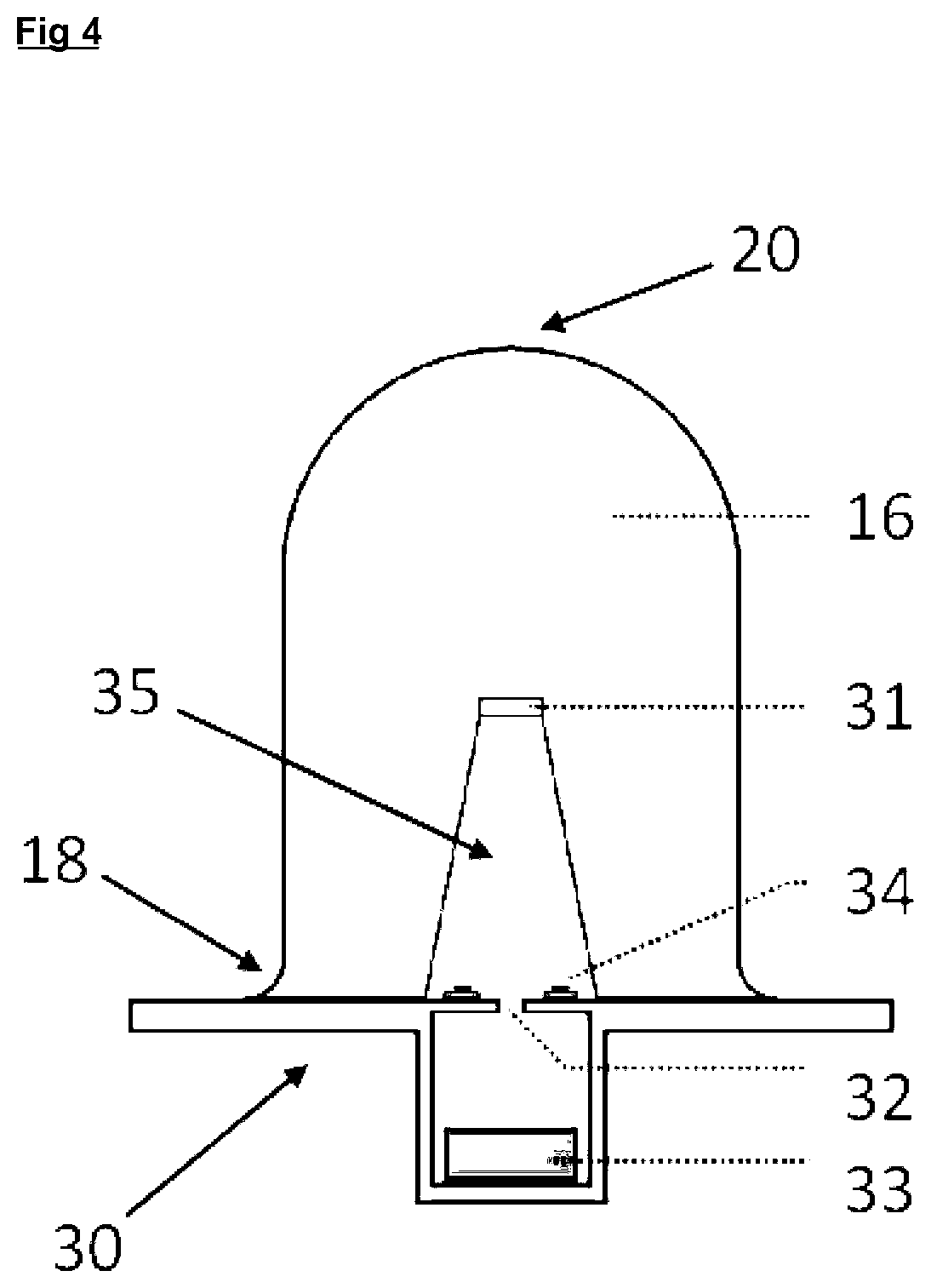Friction-based tactile sensor for measuring grip security
- Summary
- Abstract
- Description
- Claims
- Application Information
AI Technical Summary
Benefits of technology
Problems solved by technology
Method used
Image
Examples
examples
[0081]In some illustrated embodiments, estimating forces on the protrusions or pillars may be performed as follows. It is assumed that the material behaves as a linear elastic according to Hooke's Law. It is noted that the gross normal force FN is the sum of the normal forces acting on each pillar.
[0082]In the case of a single central pillar, surrounded by eight outer pillars, this means:
FNC=kΔlC, (1a)
FNO=kΔlO=k(ΔlC−d)=FNC−kd, and (1b)
FN=FNC+8FNO=9kΔlC−8kd, (1c)
where k is the spring constant of the elastic material of the pillars. Therefore:
FNC=FN9+8kd9,and(2a)FNO=FN9-kd9.(2b)
[0083]When a tangential force is also applied to the sensor by shearing the surface that is in contact, each of the pillars also experiences a tangential force (see FIG. 1C). When all pillars are stuck to the surface (not slipping), and assuming that (i) the compressive strain on the pillars is small relative to their height, (ii) the difference in height between the longer and shorter pillars is also small...
PUM
 Login to View More
Login to View More Abstract
Description
Claims
Application Information
 Login to View More
Login to View More - R&D
- Intellectual Property
- Life Sciences
- Materials
- Tech Scout
- Unparalleled Data Quality
- Higher Quality Content
- 60% Fewer Hallucinations
Browse by: Latest US Patents, China's latest patents, Technical Efficacy Thesaurus, Application Domain, Technology Topic, Popular Technical Reports.
© 2025 PatSnap. All rights reserved.Legal|Privacy policy|Modern Slavery Act Transparency Statement|Sitemap|About US| Contact US: help@patsnap.com



